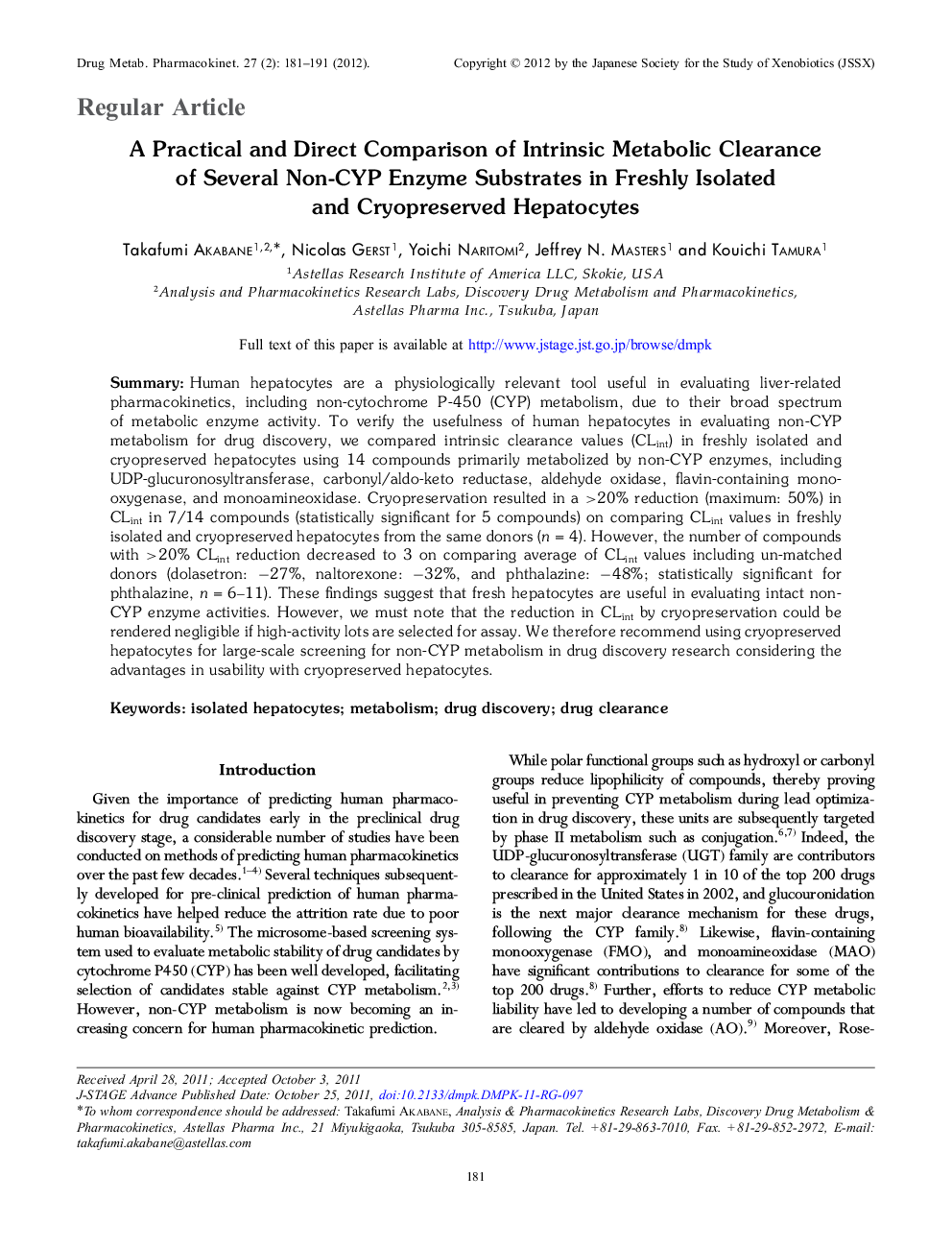| کد مقاله | کد نشریه | سال انتشار | مقاله انگلیسی | نسخه تمام متن |
|---|---|---|---|---|
| 2479181 | 1113429 | 2012 | 11 صفحه PDF | دانلود رایگان |

Summary:Human hepatocytes are a physiologically relevant tool useful in evaluating liver-related pharmacokinetics, including non-cytochrome P-450 (CYP) metabolism, due to their broad spectrum of metabolic enzyme activity. To verify the usefulness of human hepatocytes in evaluating non-CYP metabolism for drug discovery, we compared intrinsic clearance values (CLint) in freshly isolated and cryopreserved hepatocytes using 14 compounds primarily metabolized by non-CYP enzymes, including UDP-glucuronosyltransferase, carbonyl/aldo-keto reductase, aldehyde oxidase, flavin-containing mono-oxygenase, and monoamineoxidase. Cryopreservation resulted in a > 20% reduction (maximum: 50%) in CLint in 7/14 compounds (statistically significant for 5 compounds) on comparing CLint values in freshly isolated and cryopreserved hepatocytes from the same donors (n = 4). However, the number of compounds with > 20% CLint reduction decreased to 3 on comparing average of CLint values including un-matched donors (dolasetron: –27%, naltorexone: –32%, and phthalazine: –48%; statistically significant for phthalazine, n = 6–11). These findings suggest that fresh hepatocytes are useful in evaluating intact non-CYP enzyme activities. However, we must note that the reduction in CLint by cryopreservation could be rendered negligible if high-activity lots are selected for assay. We therefore recommend using cryopreserved hepatocytes for large-scale screening for non-CYP metabolism in drug discovery research considering the advantages in usability with cryopreserved hepatocytes.
Journal: Drug Metabolism and Pharmacokinetics - Volume 27, Issue 2, 2012, Pages 181-191